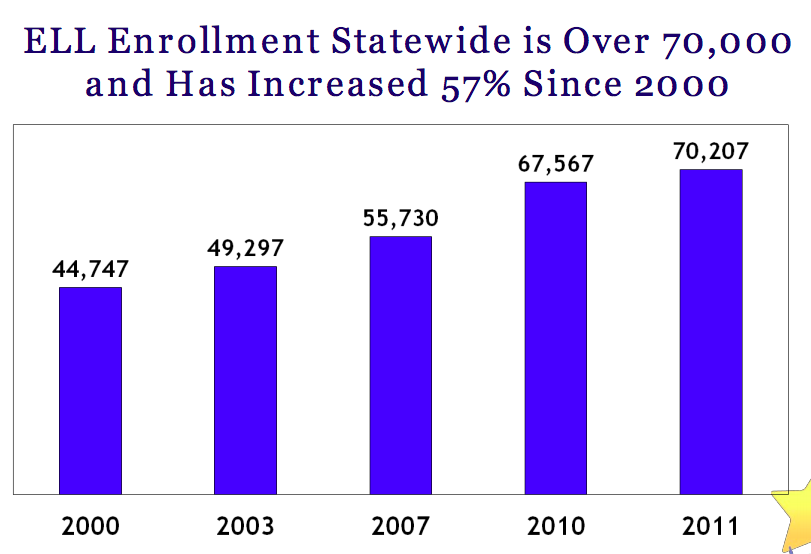If you plan on being a core academic teacher in Massachusetts, you either are or soon will be fairly familiar with sheltered instruction and the Sheltered English Immersion program. I do plan on teaching in Massachusetts and am in the "getting to know you" phase of my relationship with sheltered English instruction, so I thought it would be helpful for myself and for other teachers in similar positions to have a brief overview of what sheltered instruction is, where it comes from, and why Massachusetts is making us learn about it. Here are some facts to start off with:
- English language learners (ELLs) are the fastest growing population in the U.S. school system, with the number of English learners tripling since 1998 (Echevarría 1).
- In Massachusetts, ELL Enrollment has increased by 57% since 2000
- For the 2013-2014 academic year in Massachusetts, the annual ELL dropout rate was approximately 3 times higher than that of non-ELL students. See this Department of Education report.
The poor performance of increasing numbers of ELLs in Massachusetts is not a new thing; the numbers were actually significantly worse in 2011, when the U.S. Department of Justice notified the Mass. Department of Elementary and Secondary Education (DESE) that their ELL instruction was not adequate to meet the needs of their student populations. The Department of Justice actually qualified the low quality ELL education in Massachusetts as a violation of civil rights as well as the federal Equal Opportunities Act. In response to this pressure from the Department of Justice, in June 2012, Massachusetts approved the Rethinking Equity and Teaching for English Language Learners (RETELL) initiative, which is a collection of reforms regulating ELL instruction in schools. One of the primary components of the RETELL initiative is the requirement that all core academic teachers earn a Sheltered English Immersion (SEI) Teacher Endorsement, which equips them to use sheltered English instruction in their classrooms.
Sheltered English instruction is a pedagogical approach to helping ELLs access and understand grade-level, content-area knowledge while also building their English language skills. The term sheltered suggests that "such instruction provides refuge from the linguistic demands of mainstream instruction, which, unless modified, are beyond the comprehension of many English learners" (Echevarría 50). In other words, sheltered instruction, also referred to as Specially Designed Academic Instruction in English in some places, is intended to protect ELLs from English language requirements that they are unable to meet while they are developing both language and content-area skills. This kind of instruction can be used in a mainstream classroom where ELL students are surrounded by fluent English-speakers, or in a class entirely made up of ELLs (from Brown University's SEI page). A core idea behind sheltered instruction is that it should benefit both ELLs and English-proficient students, making it appropriate for use in a mainstream class as well as an ELL class; all students should experience a richer, more rewarding educational experience when sheltered instruction is employed correctly.
And so, in response to generally inadequate educational opportunities for our ELL students here in Massachusetts, the state is requiring teachers to get some explicit instruction on how to work with students who do not have the necessary English language skills to complete their work independently. The most common way of attaining this newly required SEI endorsement is by completing an SEI endorsement class, which is what I will be doing. Because of this, you can expect to be seeing some ELL-themed blog posts over the next few months, which will make having this overview to refer back to even more useful!
